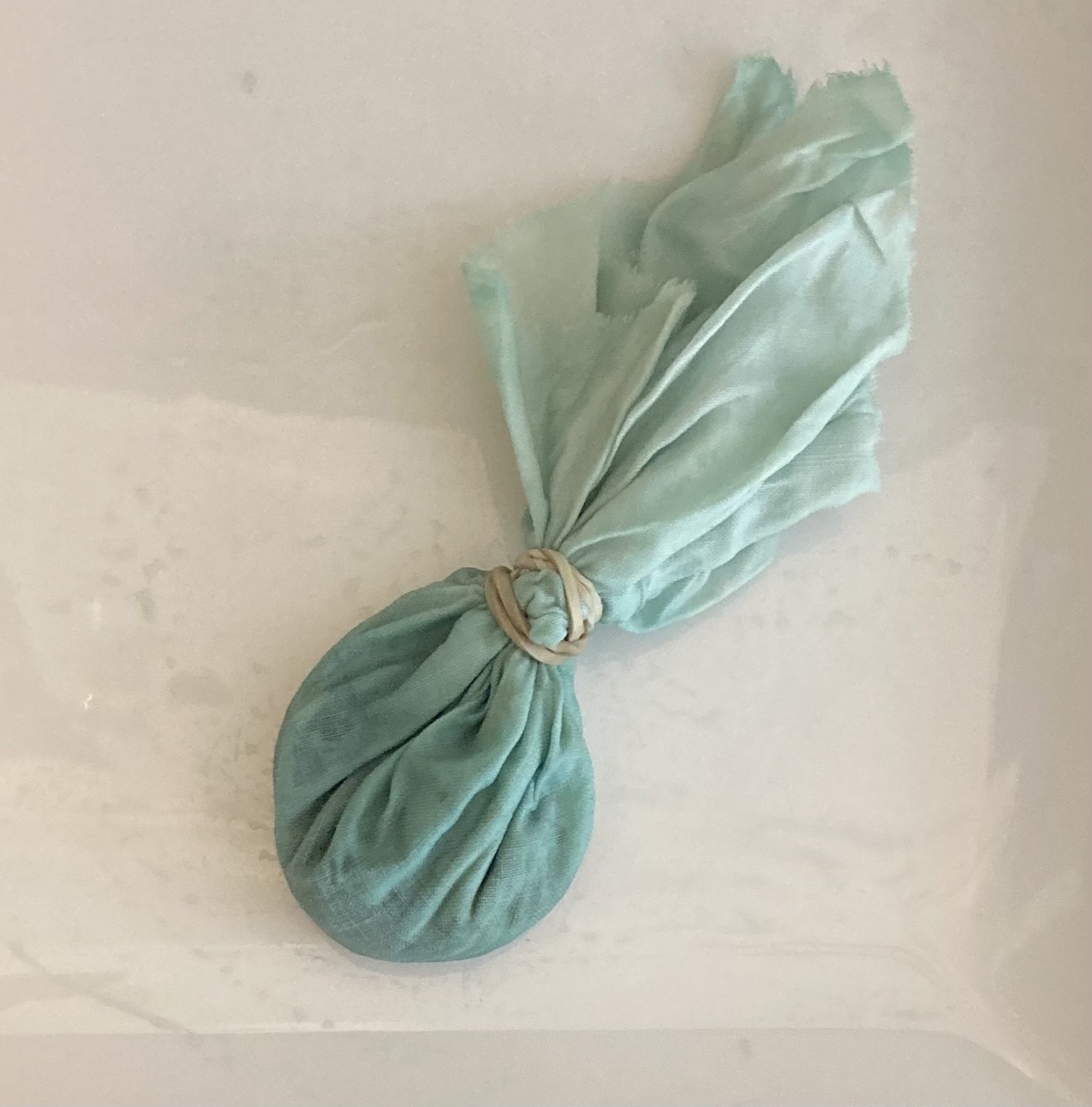indigo from indican (a less common approach)
The intro of a paper describing a biotech approach to dyeing with indigo was where I first learned that indican is in vacuoles and the beta-glucosidase enzyme is in chloroplasts (and that indican can be boiled). The researchers used two different bacterial strains to separately produce indican and an enzyme that can convert it to indoxyl + glucose, and it made me wonder if there was a way to collect indican and beta-glucosidase separately from fresh leaves.
It turns out that just wilting a leaf in hot water will burst the vacuoles, releasing the indican with most of the rest of the leaf structure still intact. Water hot enough to do that will naturally inactivate beta-glucosidase, so we end up with indican and no enzyme. And when we crush a leaf, we know from our blue fingers that we released active enzyme (plus indican of course, but the more the merrier). This is the inspiration for the approach below, which I’m sure has been done before at some point, but it doesn’t seem to be in common use.
This morning I started with just over 200 grams of freshly harvested leaves. After weighing, I rinsed them in cool water and set aside about 15 grams of tender young leaves to use as the source of enzyme.
I wilted the rest of the leaves in simmering water, adding a handful at a time.
A scrap of cotton cloth served as a filter to remove any plant debris.
The fresh young leaves I’d set aside get tied into a tidy bundle with a smaller scrap of cotton and a rubber band.
After a quick squeeze to crush the leaves, into the indican broth it went (now in a tall glass jar so it’s easier to see each step of the process).
After some mixing and mashing, the liquid starts to scatter light — maybe tiny crystals of insoluble leucoindigo indoxyl starting to form?
At this point, I removed the fresh leaf bundle and it quickly turned a lovely light blue.
With additional swirling and stirring, the liquid keeps getting murkier and is starting to be a little bit blue.
Switching to a hand whisk is a much more efficient way to add oxygen, and things start to look very blue.
Very, very blue.
The cloth from the leaf bundle has turned darker blue as well. There’s definitely potential for adapting the technique that the researchers used in their study to build up color on cotton cloth with alternate doses of indican and enzyme
At this point, the newly formed indigo is dispersed throughout the broth as a colloidal suspension, analogous to a nice creamy milk. Getting the indigo to separate out is a bit like making cottage cheese, and I’ve had good luck with heating it up and adding a dash of vinegar. This time I forgot and added the vinegar before heating and it didn’t aggregate quite as dramatically, but I was still able to filter it out.
These are indigo “curds” from late last summer, and that batch filtered very easily. It also may have helped that the indican content was higher that time of year.
Today’s indigo from about 200 g of early June leaves, after using the cloth from the leaf bundle as the filter. The only pH adjustment was a bit of vinegar at the end and there shouldn’t be much of that left in the final product. Once I’ve collected a few more batches of indigo, I should have enough for a small vat.














